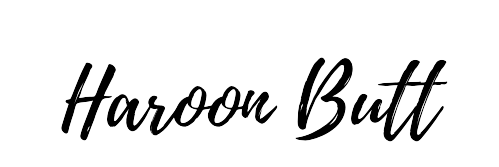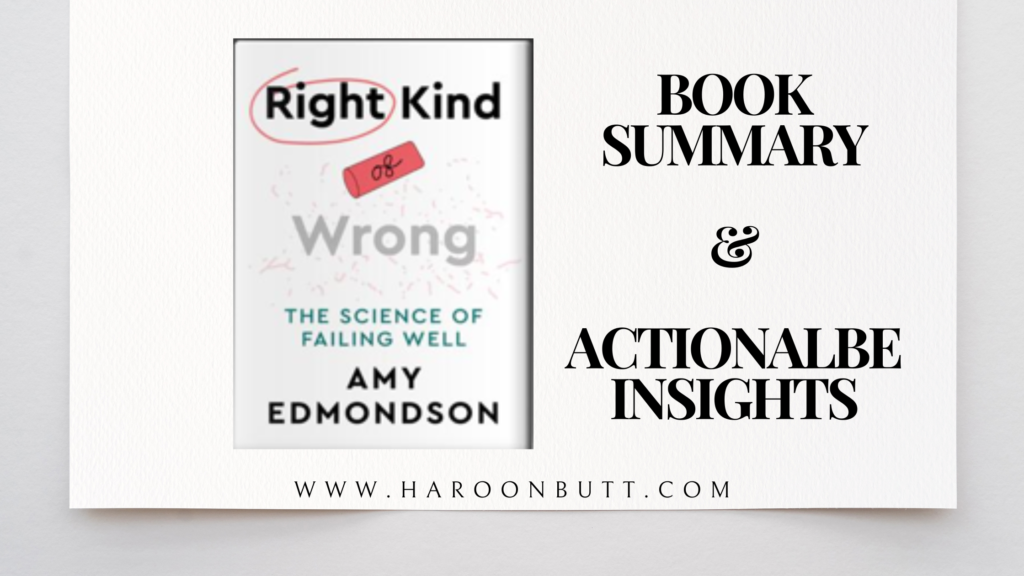Have you ever wondered why some people seem to bounce back from failure like they’re made of rubber, while others crumble like a house of cards? Amy C. Edmondson’s book “Right Kind of Wrong: The Science of Failing Well” might just hold the key to this mystery. Let’s dive into the fascinating world of productive failure and discover how we can turn our stumbles into springboards for success.
The Right Kind of Wrong
Edmondson kicks off her book with a brain-teaser: Why on earth would anyone chase after mistakes on purpose? It sounds counterintuitive, right? But here’s the kicker – not all blunders are created equal. There are “right wrongs” and “wrong wrongs.”
The “right wrongs” are like golden tickets to the Wonka factory of learning and growth. These are the mistakes we make when we’re coloring outside the lines, venturing into uncharted territory, or giving the status quo a friendly poke. On the flip side, “wrong wrongs” are those face-palm moments born from carelessness or laziness. The key is to embrace the former and minimize the latter.
Eureka! The Power of Productive Failure
To illustrate this point, Edmondson shares the tale of Henry Bessemer, an engineer who turned a massive facepalm into a fist pump. Bessemer was wrestling with a technical problem more twisted than a pretzel. His initial attempts ended in a spectacular belly flop. But here’s where it gets interesting – instead of throwing in the towel, Bessemer kept his thinking cap on and his eyes peeled for a fresh angle.
Lo and behold, a brainwave hit him like a bolt of lightning, and he cracked the code, shouting “Eureka!” (which is ancient Greek for “I’ve nailed it!”). This story isn’t just about an engineer’s lightbulb moment; it’s a testament to the power of perseverance and the magic that can happen when we view failure as a stepping stone rather than a stumbling block.
The Human Element: To Err is Human, To Learn is Divine
Now, let’s address the elephant in the room – we’re all a bit rough around the edges. Try as we might, mistakes are our faithful companions. But here’s the silver lining: each gaffe is like a free tutoring session in the school of life. Every time we slip up, we have the chance to level up our game in behavior and decision-making.
Edmondson doesn’t shy away from the dark side of errors. Yes, they can lead to face-palm moments or even full-blown catastrophes. But the real magic lies in our error-handling mojo. If we can handle our blunders with grace, learn the lesson, and take a mulligan, we might just dodge the worst of the fallout.
The Perfect Storm: When Systems Fail
To drive home the importance of understanding systems, Edmondson recounts the misadventures of the ill-fated tanker “Torrey Canyon” and its ever-optimistic Captain Pastrengo Rugiati. This tale serves up a story of nautical nightmares, complete with environmental heartbreak and a side of responsibility roulette.
The Torrey Canyon disaster earned itself a top spot in the British Oil Spill Hall of Shame, wreaking havoc on the local ecosystem and turning the fishing industry into a tragic comedy. But beyond the environmental impact, this story highlights the importance of understanding the systems we operate within and how a single decision can have far-reaching consequences.
Contexts and Consequences: Navigating the Maze of Failure
Edmondson takes us on a whimsical dive into the realm of “Contexts and Consequences,” exploring how our surroundings play puppeteer with our actions and choices. She introduces us to the “Electric Maze” experiment, where participants tiptoed across a mammoth checkerboard carpet, trying not to trigger any buzzers.
This little adventure shows that we’re like chameleons, blending into familiar territories with ease. But throw us into the unknown, and suddenly we’re jitterbugging with unease and nerves. The lesson? We need to dismantle our autopilot mode to tango with uncertainty in a more level-headed fashion.
Appreciating Systems: Seeing the Forest for the Trees
Remember Spencer Silver, the 3M scientist who, while aiming for the stars with aircraft glue, ended up sticking us with the Post-it Note? This accidental hero was on a quest for the stickiest of adhesives but ended up with a glue that was about as strong as a handshake from a noodle. Despite its initial ‘failure’, this peculiar goop was the humble beginning of the Post-it Note empire.
The moral of Spencer’s sticky saga is that a system is more than just its gooey parts; it’s the sticky relationships between them. To truly understand a system, you’ve got to look at the whole sticky note pad, not just the single paper.
Thriving as a Fallible Human Being: Embracing Your Inner Klutz
In the final chapter, Edmondson encourages us to embrace our inner klutz. It’s about giving yourself a bear hug and a high-five for being authentically you, warts and all. Stumbling isn’t just a dance move you haven’t mastered yet; it’s an integral part of the human cha-cha.
Cozying up to your personal collection of oopsies can unleash a kind of freedom that’s more refreshing than a surprise day off. It’s about getting comfy in your own skin and ditching the drama over your personal blooper reel.
Get Your Book HERE
Implementing the Science of Failing Well
So, how can we apply these insights in our daily lives? Here are a few practical tips:
- Reframe failure: Instead of seeing mistakes as dead ends, view them as detours on the road to success.
- Cultivate a learning mindset: Approach each failure with curiosity. Ask yourself, “What can I learn from this?”
- Create a “failure resume”: Keep track of your failures and the lessons learned. It’s a powerful tool for personal growth.
- Practice self-compassion: Be kind to yourself when you mess up. Remember, even the greats had their fair share of flops.
- Seek feedback: Don’t be afraid to ask for constructive criticism. It’s like a free GPS for your personal development journey.
- Celebrate small wins: Acknowledge your progress, no matter how small. It’ll keep you motivated on your journey of growth.
- Build a support network: Surround yourself with people who encourage you to take risks and learn from your mistakes.
Remember, getting this summary will never replace the value of reading the entire book. There’s a wealth of insights, examples, and practical advice in Edmondson’s work that we’ve only scratched the surface of here.
As we wrap up this journey through the science of failing well, keep in mind that mastering the art of productive failure is a lifelong process. It’s not about avoiding mistakes – it’s about making the right kind of mistakes and learning from them.
Stay tuned for more book summaries coming your way. We’ll be exploring more game-changing ideas that can help you level up in both your personal and professional life. Remember, knowledge is power, but applied knowledge is superpower. So go forth, fail forward, and let your stumbles become your stepping stones to success!
What constitutes the “right kind of wrong”?
Ever wondered why some mistakes feel like blessings in disguise? That’s the “right kind of wrong”! It’s not about spilling coffee on your shirt, it’s about taking calculated risks that push boundaries. Like Edison’s light bulb attempts – each failure lit the path to success. The right kind of wrong teaches you something valuable, opens new doors, or challenges the status quo. So next time you mess up, ask yourself: “Did I learn something game-changing?” If yes, congratulations! You’ve just experienced the right kind of wrong. Remember, it’s not about avoiding mistakes, it’s about making the ones that matter.
How can we differentiate between types of failure?
Failure comes in all shapes and sizes, but how do you spot the good from the bad? It’s simple – look at the intention and the outcome. Did you take a calculated risk or was it plain carelessness? Did you learn something valuable or just repeat an old mistake? Productive failures are like gym sessions for your brain – they hurt, but they make you stronger. They’re the ones that challenge assumptions, spark innovation, or reveal hidden opportunities. On the flip side, unproductive failures are like eating a whole pizza by yourself – they feel good in the moment but leave you with regret and no real benefit. So next time you fail, ask yourself: “Am I growing from this?” If the answer is yes, you’re on the right track!
Why is it challenging to learn from failure?
Let’s face it, failure feels like a punch to the gut. Our brains are wired to avoid pain, so we instinctively want to run and hide when we mess up. It’s like touching a hot stove – you don’t want to do it again! But here’s the thing: learning from failure is like building a muscle. It’s uncomfortable at first, but it makes you stronger. The challenge lies in overcoming our natural instincts. We need to resist the urge to blame others, make excuses, or sweep it under the rug. Instead, we must face our failures head-on, analyze what went wrong, and extract valuable lessons. It’s not easy, but remember: every expert was once a beginner who refused to give up. So next time you fail, don’t run – lean in and learn!
How can we cultivate a culture that embraces failure?
Imagine a workplace where your boss says, “Great job failing! What did we learn?” Sounds crazy, right? But that’s exactly the kind of environment that breeds innovation and growth. To cultivate a failure-friendly culture, start by reframing failure as experimentation. Instead of “failed projects,” talk about “learning opportunities.” Celebrate the lessons learned, not just the successes. Create a “failure resume” where team members document their stumbles and the insights gained. Lead by example – share your own failures and how they’ve shaped your journey. Most importantly, provide psychological safety. Foster an environment where people feel safe to take risks without fear of ridicule. Remember, a culture that embraces failure isn’t about lowering standards – it’s about raising the bar for learning and innovation!
How can leaders promote intelligent failures?
Leaders, listen up! Promoting intelligent failures isn’t about letting your team run wild – it’s about fostering a culture of smart risk-taking and continuous learning. Start by celebrating the process, not just the outcome. When a team member takes a calculated risk that doesn’t pan out, focus on the insights gained. Create a “failure of the month” award that recognizes bold attempts and valuable lessons. Encourage your team to maintain a “failure resume” alongside their achievements. Lead by example – share your own failures and how they’ve contributed to your growth. Provide resources for experimentation and set aside “risk budgets” for innovative projects. Remember, your reaction to failure sets the tone for your entire team. So next time someone fails, ask “What did we learn?” instead of “Who’s to blame?” Your team will thank you, and your innovation will soar!

